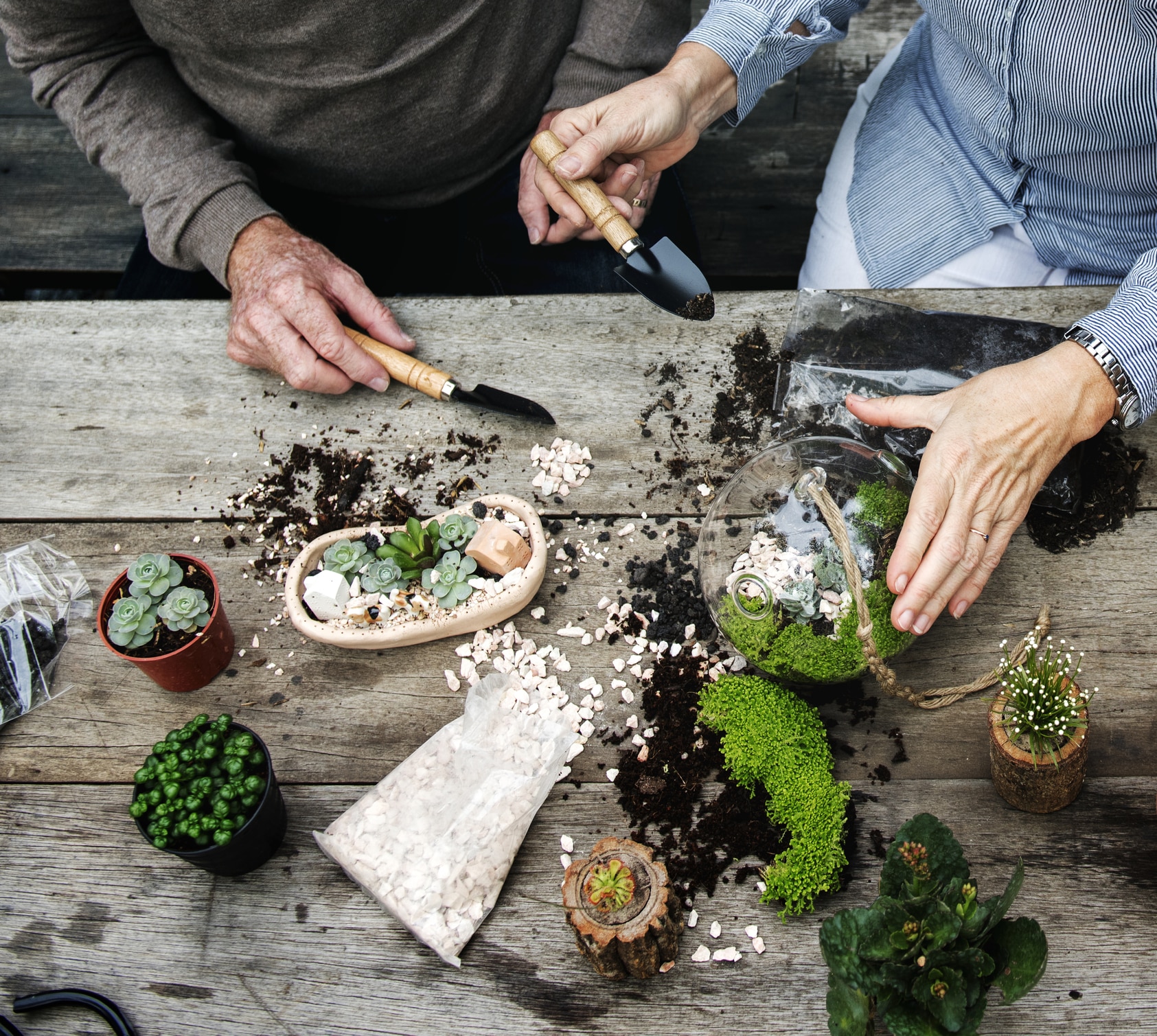How to Create a Low-Maintenance Terrarium for Exotic Plants?

A terrarium is a miniature indoor garden housed in a clear glass container, a captivating blend of art and nature, providing a much-needed green space. It’s not just about bringing the outside environment in; it’s about creating a small, personalized microcosm that adds vibrancy and tranquillity. The creation of a terrarium is an engaging and rewarding task, and it doesn’t require a green thumb. This article will guide you to create your own low-maintenance terrariums for exotic plants with step-by-step instructions.
Choosing the Right Container for Your Terrarium
The first step in creating a terrarium is choosing the right container. Your container—whether it be a simple glass jar, fish tank, or unique vintage piece—determines the overall look and feel of your garden. It acts as a blank canvas, allowing you to showcase your creativity and style.
A découvrir également : What Are the Most Creative Under-Stair Storage Solutions for Small Homes?
While a glass container with a lid is ideal for creating a closed terrarium, an open container works best for plants that prefer less humidity. The size of the container will also dictate which plants you can include. Large containers can accommodate taller, bushier plants, while small containers are suited for petite, low-growing varieties.
As for the shape, it is largely dependent on your personal preference and the space where your terrarium will sit. But remember, the container should be clear and not tinted, to allow for light passage.
Dans le meme genre : How to Create a Sustainable Compost Tea System for Organic Gardening?
Preparing the Base Layer with Gravel and Charcoal
Once you have chosen your container, the next step is to prepare the base layer. This is crucial in ensuring proper drainage for your terrarium, as it prevents water from pooling and causing root rot.
Start by adding a layer of small rocks or pebbles at the bottom of your container. This will allow excess water to drain away from the plant’s roots. The height of this layer will depend on the size of your container, but a good rule of thumb is to aim for a depth of approximately one to two inches.
Following the layer of rocks, you should add a layer of charcoal. This is a key component in controlling the smell and preventing mildew and fungi growth in your terrarium. The charcoal acts as a filter, absorbing any odours and impurities from the water that drains down.
Selecting and Positioning Your Plants
The heart of your terrarium is the selection of plants. Choosing the right plants is essential as it not only affects the aesthetic appeal, but also the maintenance level of your terrarium.
For a low-maintenance terrarium, opt for small, slow-growing plants that thrive under low light conditions. Ferns, moss, and succulents are great options. They have a small root system, which is ideal for the confined space of a terrarium.
Ensure that the plants you choose have similar light and water requirements. This will make the maintenance process much easier, as you won’t have to cater to different needs.
When positioning your plants, consider their growth patterns. Place taller plants at the back or center, with shorter ones towards the front or sides. This will create a sense of depth and make your terrarium visually appealing.
Adding the Soil and Planting
Now that you have your plants, you can add the soil. Different plants prefer different types of soil, so it’s essential to do your research. For example, succulents prefer a sandy soil mix, while ferns like a richer soil composed of peat moss.
Add enough soil to allow your plants to root comfortably. Typically, the soil layer should be twice as deep as the height of your plant’s root ball.
To plant, dig a small hole in the soil, place your plant inside, and gently cover the roots with more soil. Pat around the base of the plant to secure it, but be careful not to pack the soil too tightly as this can hinder root growth.
Terrarium Maintenance: Watering, Light and Ventilation
A well-constructed terrarium requires minimal maintenance. However, it still needs some care to thrive.
Watering should be done sparingly. A closed terrarium will recycle its own water, so it needs very little additional watering. An open terrarium may require more frequent watering, but be careful not to overwater, as this can lead to root rot.
Light is also essential for plant growth. Place your terrarium in a spot that receives plenty of indirect light, as direct sunlight can cause the interior to overheat and damage the plants.
Lastly, ventilation is just as important. For closed terrariums, remove the lid every couple of weeks to let fresh air in. For open terrariums, ensure they are located in a place where air can circulate freely.
Remember, the joy of creating a terrarium comes from the freedom to experiment with different plants, container shapes, and decorative elements. With the right care and conditions, your terrarium can provide a beautiful, low-maintenance addition to your home or office.
Decorative Embellishments for Your Terrarium
In addition to the plants, you can also embellish your terrarium with miniature figurines, rocks, crystals, or other decorative elements. This adds a personal touch and makes your terrarium unique.
You might want to mimic a forest floor by using twigs, fern fronds, and mossy rocks. Alternatively, you could create a desert ambiance with quartz crystals, sand, and cacti. Make sure whatever you include won’t decompose or fade over time.
Once your plants are established, you might want to add some air plants or bromeliads. These tropical plants are perfect for a closed terrarium as they love humid environments and require less watering than most plants. Air plants don’t need soil to grow, so they can be attached to a piece of driftwood or placed on top of rocks.
Remember, less is more. Don’t clutter your terrarium. Allow spaces for the plants to grow and maintain a sense of tranquillity.
Common Problems and Solutions in Terrariums
Even with low-maintenance terrariums, you may encounter a few issues. Being aware of these common problems can help you maintain a healthy terrarium.
One common issue is overwatering. If the leaves of your plants start to yellow or fall off, it is likely that they are getting too much water. To resolve this, reduce the amount of watering and remove any rotten plant material from the terrarium. In a closed terrarium, this could mean opening the lid for a day or two to let the excess water evaporate.
Another problem you may encounter is lack of light. If your plants are looking pale or leggy, they may need more light. Move your terrarium to a location with more indirect light. However, avoid direct sunlight as it can cause the terrarium to overheat.
Lastly, if you notice your plants are not growing as expected, it could be due to poor soil nutrition. In this case, consider using a diluted liquid fertilizer to replenish the nutrients in the soil.
Conclusion
Creating a low-maintenance terrarium is a rewarding and enjoyable process. The key is to choose the right container, right plants, and the right location. Whether you opt for a closed terrarium or an open terrarium, remember to provide the essential components for plant growth – light, water, and ventilation.
A terrarium allows you to create your own miniature garden, introducing a piece of nature into your home or office. It’s not just an indoor garden; it’s an artistic creation, a conversation starter, and a daily reminder of nature’s tranquility.
So, go ahead and start planning your terrarium garden. Experiment with different plants and decorations, and most importantly, have fun in the process. In time, you’ll find that maintaining your terrarium becomes second nature, and the joy it brings far exceeds the effort put into creating it.
